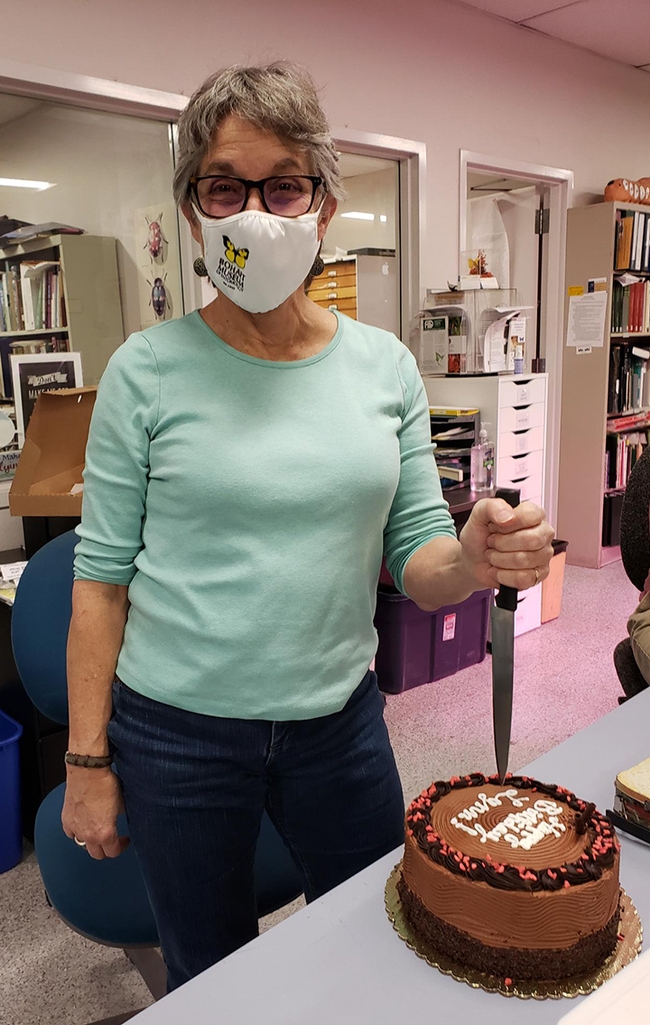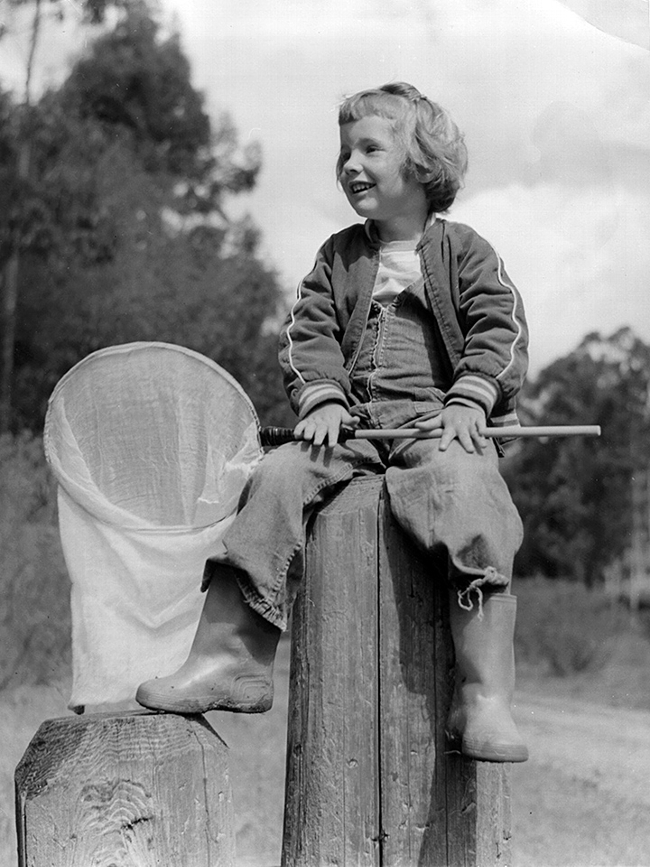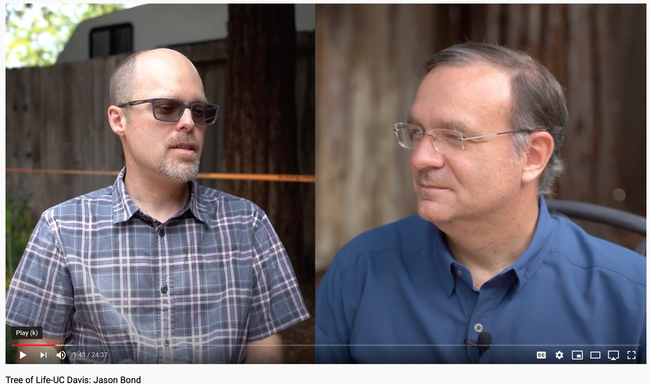- Author: Kathy Keatley Garvey
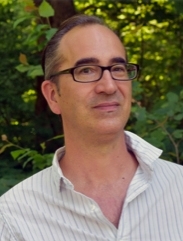
It's a name coined by futurist Herman Kahn in a 1967 essay describing a theoretical United States megalopolis extending from the metropolitan area of Boston to that of Washington, D.C.," according to Wikipedia.
Fast forward to the next seminar hosted by the UC Davis Department of Entomology and Nematology.
Research entomologist Vince D'Amico of the USDA's Forest Service Philadelphia Field Station will speak on "Monitoring and Ecological Research in the Forests of the BosWash Megalopolis" at 4:10 p.m., Wednesday, Feb. 9 in an in-person and virtual seminar hosted by the UC Davis Department of Entomology and Nematology.
The seminar will take place in 122 Briggs Hall. The Zoom link is https://ucdavis.zoom.us/j/99515291076
BosWash Megalopolis is the heavily populated area extending from Boston to Washington and including New York City, Philadelphia, and Baltimore.
"The temperate deciduous forest biome covers about 5 percent of the Earth's surface, but is home to 25 percent of the human population," D'Amico says in his abstract. "Once a huge tract of forested land, this area now consists of many thousands of small, heterogenous forests. Research in the FRAME (FoRests Among Managed Ecosystems) program is conducted over a network of permanent forest sites in the BosWash Megalopolis of the U.S. East Coast, to answer ecological questions at many trophic levels. I will discuss the results of some of this research."
FRAME researchers target temperate deciduous forests in the Anthropocene age, a current geological age viewed as the period during which human activity has been the dominant influence on climate and the environment.
From the website: "Our current work includes experimental and observational studies of soil and key species to understand interactions between plants, invertebrates, and vertebrates. Other research is focused on monitoring, manipulations aimed directly at site improvement, and technology transfer for better management of urban forest fragments. As of 2022, there are 60 FRAME sites in MA, PA, DE, MD and NC."
D'Amico, a 25-year research entomologist with USDA, has served on the adjunct faculty of the University of Delaware since 2001. His expertise includes ecosystems ecology, urban ecology an invasion ecology. D'Amico received his bachelor's degree in biology in 1989, and his doctorate from the University of Massachusetts, Amherst.
The Wednesday seminars are coordinated by nematologist Shahid Siddique, assistant professor, UC Davis Department of Entomology and Nematology. For technical issues, contact ssiddique@ucdavis.edu.
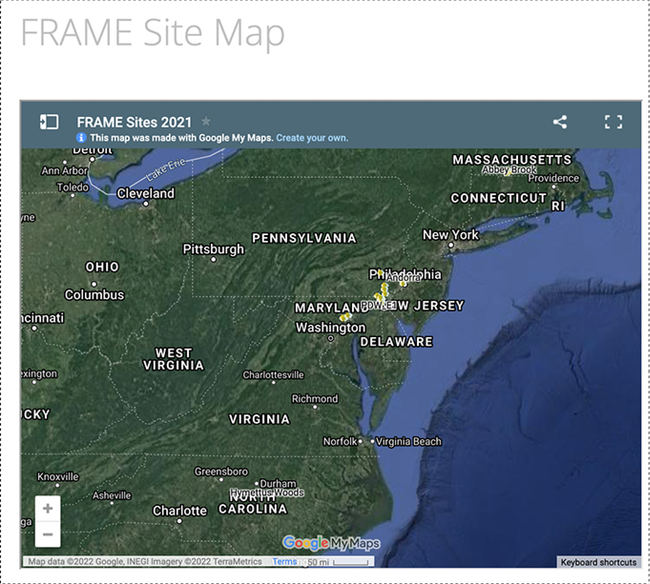
- Author: Kathy Keatley Garvey
If you dislike spiders, you might want to check out the political scene (probably not!), the almond pollination season (yes, it's coming), or ask Siri "When does spring begin? (Answer: March 20)
Wait, are you still there? Whew! Then you'll want to know about the upcoming gathering of arachnologists--those who engage in the scientific study of arachnids, including spiders, scorpions and tarantulas.
News flash: The University of California, Davis, will be the site of the 2022 American Arachnological Society (AAS) convention. It's set from Sunday, June 26 through Thursday, June 30.
It will be hosted by two UC Davis arachnologists: Jason Bond, the Evert and Marion Schlinger Endowed Chair in Insect Systematics, UC Davis Department of Entomology and Nematology, and associate dean, College of Agricultural and Environmental Sciences; and Joel Ledford, assistant professor of teaching, Department of Plant Biology, College of Biological Sciences.
Formal meeting registration will begin Sunday afternoon, June 26, followed by an evening reception. A local daylong field trip is planned for Thursday, June 30. (Pre-register for the meeting at https://ces.ucdavis.edu/AASM)
"We typically expect somewhere around 125-150," Bond says.
The event is sponsored by the U.S. National Science Foundation. In collaboration with the UC Davis Bohart Museum of Entomology and the University of Nebraska, “we will also host a pre-meeting, outreach event, ‘Eight-Legged Encounters' for the Davis community and campus,” Bond said. It's tentatively planned for Saturday, June 25. Those interested in attending should contact Bond at jbond@ucdavis.edu.
The purpose of the American Arachnological Society, founded in 1972, is “to further the study of arachnids, foster closer cooperation and understanding between amateur and professional arachnologists, and to publish the Journal of Arachnology," according to its website.
Factoid from AAS: "Spiders (order Araneae) are air-breathing arthropods that have eight legs and chelicerae with fangs able to inject venom. They are the largest order of arachnids and rank seventh in total species diversity among all orders of organisms. Spiders are found worldwide on every continent except for Antarctica, and have become established in nearly every habitat with the exceptions of air and sea colonization. As of March 2021, at least 49,200 spider species, and 129 families have been recorded by taxonomists. However, there has been dissension within the scientific community as to how all these families should be classified, as evidenced by the over 20 different classifications that have been proposed since 1900."
Also, check out the AAS frequently answered questions. Did you know you can ask a question?
Question: "Is it true that the black widow spider always eats her mate?"
Answer: "Nope. Black widow females are no more likely than any other female spider to eat their mates. If the female is ready to mate and if the male sings the right sweet silk song to her, then she will allow him to approach and to mate. If the female is not particularly hungry, she will likely allow the male to leave unscathed after copulation. However, the female black widow, as is common in spiders, is larger than the male. Thus, if she is hungry, she may feed on the male but this is true of many species of spiders."
Meanwhile, if you want to learn the basics about common spiders found in California, the UC Statewide Integrated Pest Management Program website offers information on black widow spiders, jumping spiders, common house spiders, and tarantulas, among others (including the hobo spider, which is not found in California). A table, illustrated with photos, lists the common spider families in North America, including:
- Agelenidae, funnel weavers or grass spiders
- Araneidae, orb weavers or garden spiders
- Clubionidae (including Corinnidae), sac spiders or twoclawed hunting spiders
- Linyphiidae (=Microphantidae), dwarf spiders
- Lycosidae, wolf spiders
- Oxyopidae, lynx spiders
- Salticidae, jumping spiders
- Theridiidae, cobweb, cobweb weaver, or combfooted spiders
- Thomisidae, crab spiders or flower spiders
If you're like me, you've probably seen--and admired--scores of spiders in your garden. Want to know who's coming to dinner? Here are images of some of my favorites:
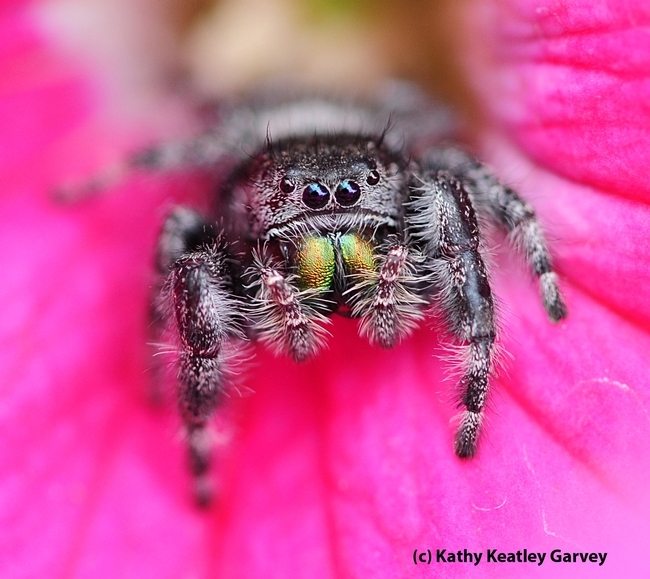
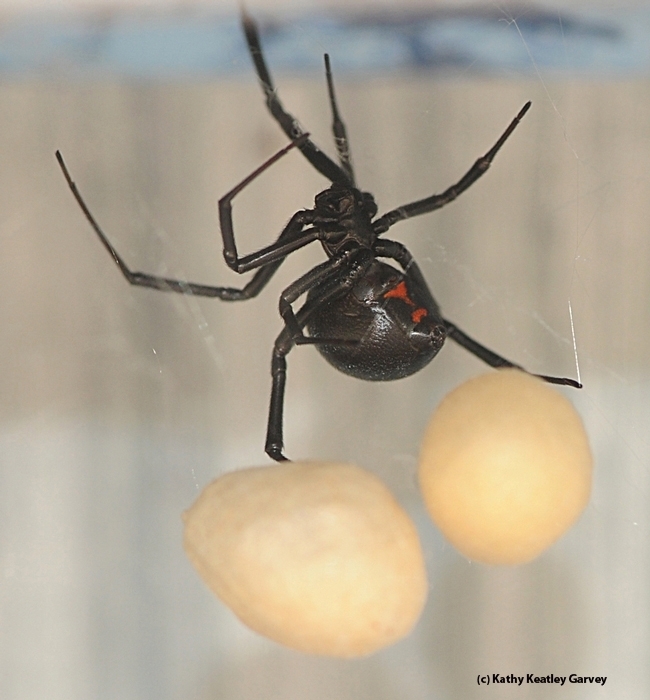
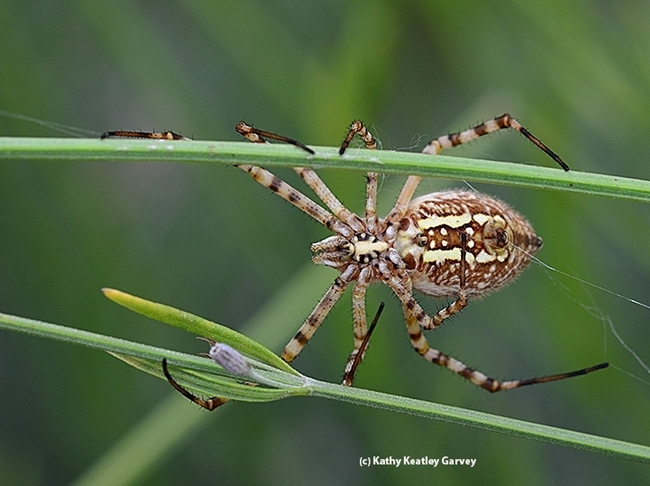
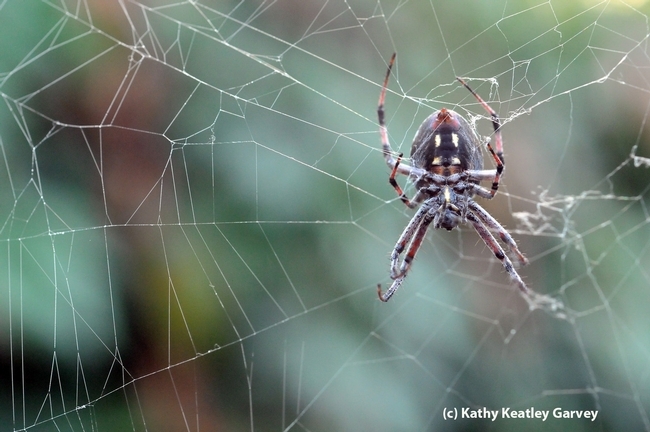
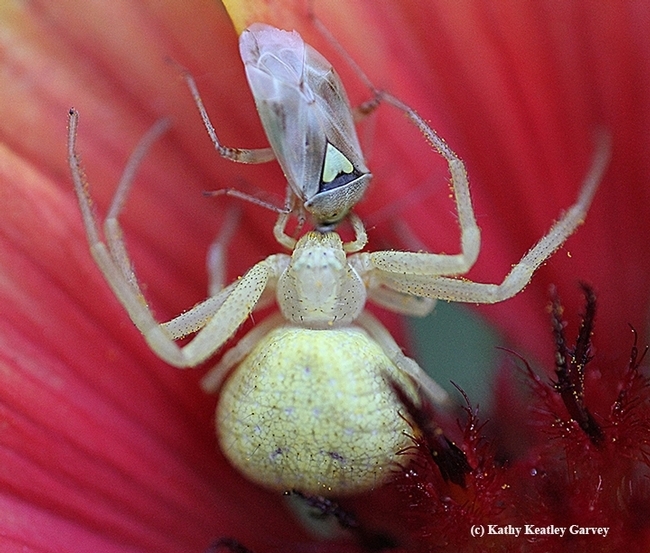
- Author: Kathy Keatley Garvey

But they can't.
So scientists and butterfly enthusiasts will.
The history is intriguing. The State Legislature designated the colorful butterfly, Zerene eurydice, as the state insect 50 years ago, and Gov. Ronald Reagan signed it into law on July 28, 1972.
Found only in California, the rarely seen butterfly is also known as (1) "the flying pansy," referring to the male's spectacular black and yellow coloring, and (2) as a "dog head" butterfly (the markings on the male resemble a silhouette of a dog's head). The female is mostly solid yellow.
The butterfly's major breeding ground is in Auburn in the Shutamul Bear River Preserve maintained by the Placer Land Trust (PLT). The butterfly is there because its larval host plant--false indigo (Amorpha californica)--grows well there. "The dogface butterfly has a range from San Diego County to Sonoma County and is usually found in mountain and foothill locations," according to an article on the PLT website. (Watch a virtual tour at https://youtu.be/kJUk1AKGtKs)
Meanwhile, the folks at the Bohart Museum of Entomology, including director Lynn Kimsey, museum scientist Fran Keller and Bohart associate Greg Karofelas (he shares his expertise as a docent leading tours and delivering presentations for the Pacific Land Trust), hope to connect with the fourth grade students of Betty Harding and Shirley Klein in the Dailey Elementary School, Fresno, who advocated it as the state insect. The teachers and students enlisted the help of State Assemblyman Kenneth L. Maddy, who authored AB 1834. "His bill was read for the first time on March 15, 1972 and referred to the Assembly Committee on Government Organization, according to a state website.
"On May 25, 1972, with a committee vote of 6-2, Mr. Maddy failed to garner the needed eight votes to recommend the legislation to a floor vote. It wasn't clear why two members voted against the bill, but a bill to designate an official state fossil also gone down to defeat earlier in the day.
"The Fresno Bee wrote, 'Dog-Faced Butterfly Has Wings Clipped.'
"Assemblyman Maddy vowed to fight on and promised a better result when the full committee was present in the next week.
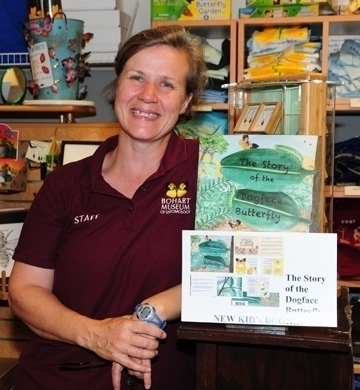
"A month later, on July 20, the Senate voted 29-0 to approve AB 1834.
"On July 28, 1972, Governor Ronald Reagan signed Assembly Bill No. 1834 designating the California dog-face butterfly the official State Insect of California." (Read more on how the butterfly became the state insect under the Ronald Reagan administration.)
The fourth graders, who were then about 10 or 11 years old, are now in their early 60s. Where are they? The folks at the Bohart Museum want to know--they'd love some first-hand information on how the project originated and why. Perhaps they could be involved in a 50th year celebration!
In 2013, Fran Keller, a UC Davis doctoral alumnus and now a professor at Folsom Lake College, published a 35-page children's book, The Story of the Dogface Butterfly that includes includes photos by Kareofelas and Keller and illustrations by then UC Davis student Laine Bauer. They earlier created a poster. Both the book and the poster are available for sale in the online gift shop at the Bohart Museum (The Bohart, located in Room 1124 of the Academic Surge Building on the UC Davis campus, is temporarily closed to the public due to the COVID pandemic and campus policies.) Net proceeds benefit the insect museum's education, outreach and research programs.
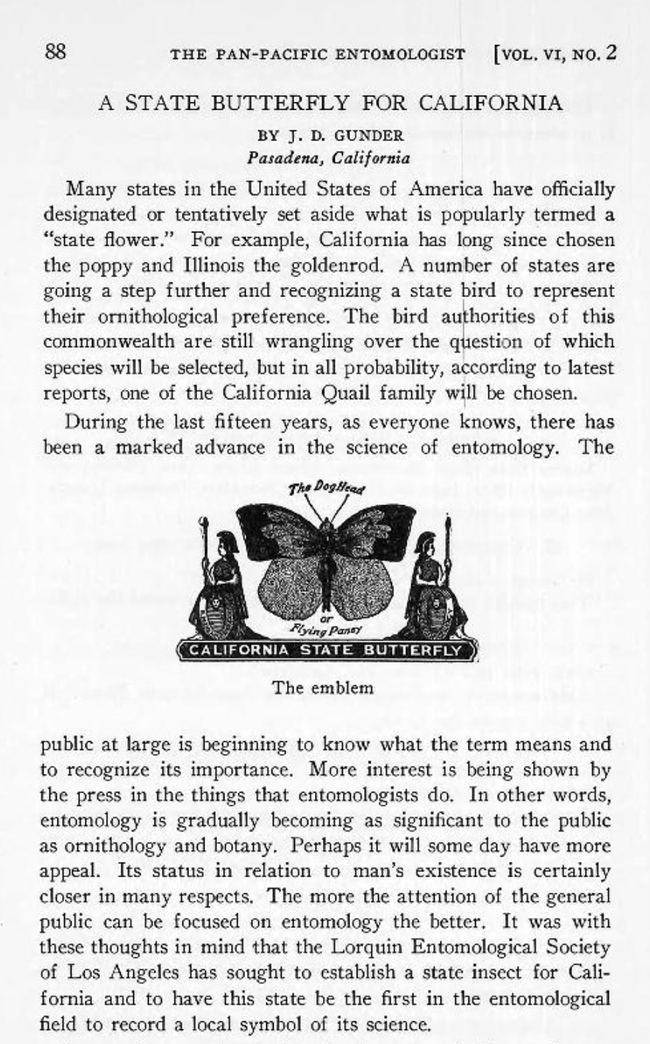
Kareofelas has assisted with news documentaries on the butterfly:
- Rob on the Road, KVIE, Public Broadcasting Service (PBS)
- Capital Public Radio, National Public Radio (NPR)
The history of how the butterfly became the state insect actually begins in the 1920s with the Lorquin Entomological Society of Los Angeles. In an October 1929 article in The Pan-Pacific Entomologist, a publication of the Pacific Coast Entomological Society, J. D. Dunder of Pasadena credits the Lorquin Entomological Society with seeking "to establish a state insect for California." Out of three choices, the group voted on the California dogface butterfly.
Dunder wrote that the butterfly is "strictly a native California butterfly" and that "thousands of specimens are used each year in entomological art work for trays, bookends, plaques, etc., so the species is already fairly well known to the pubic."
Today its image graces a first-class U.S. stamp and our California driver licenses. It's also depicted on the California State Fair monorail. The Lone Buffalo Vineyards and Winery, Auburn, memorialized it on labels of specially bottled wine, with proceeds helping conservation efforts of the Placer Land Trust to protect the butterfly. It is, indeed, a spectacular butterfly.
Now the question is, why did the fourth graders pursue the project? The butterfly is not found in Fresno. Who or what inspired them? And why?
Anyone know?
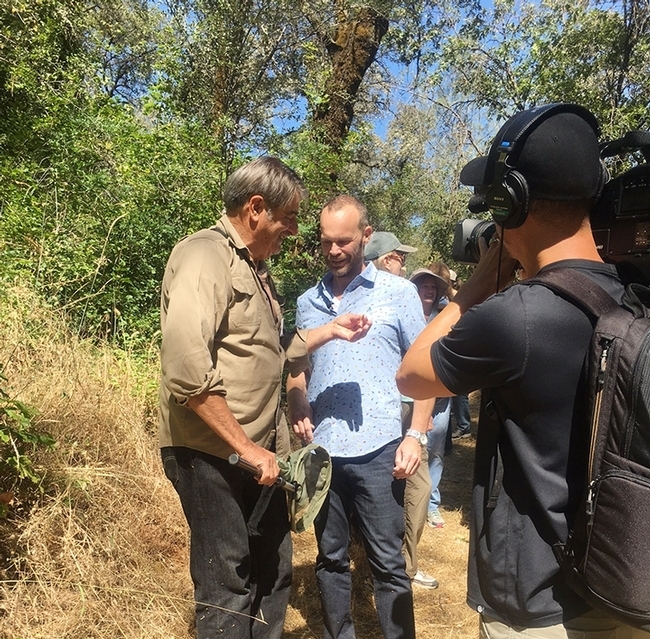
- Author: Kathy Keatley Garvey

When the 11th annual UC Davis Biodiversity Museum Day takes place Sunday, March 6, from 11 a.m. to 3 p.m. in the UC Davis Conference Center, 550 Alumni Lane, the attendance focus will be on the UC Davis community, specifically the undergraduate students.
It's a free, science-focused event that in years past, drew thousands of science fans from Yolo and surrounding counties. "This year we're focusing on undergraduate attendance," said coordinator Tabatha Yang, the education and outreach coordinator for the Bohart Museum of Entomology. "The undergrads haven't been able to experience campus life much, due to COVID pandemic policies."
COVID pandemic precautions kept the 2021 event virtual but this year it will be in person, but COVID campus safety policies will be implemented.
In the past, participants enjoyed visiting these collections in person:
- Anthropology Museum
- Arboretum and Public Garden
- Bohart Museum of Entomology
- Botanical Conservatory
- California Raptor Center
- Center for Plant Diversity
- Häagen-Dazs Honey Bee Haven
- Nematode Collection
- Marine Invertebrate Collection
- Museum of Wildlife and Fish Biology
- Paleontology Collection
- Phaff Yeast Culture Collection
- Viticulture and Enology Collection
The committee is working out the details at its weekly Zoom meetings. For up-to-date information, visit the the UC Davis Biodiversity Museum Day and follow on Twitter and Facebook.
And the thousands of other science fans eager to head over to UC Davis? The 108th annual UC Davis Picnic Day awaits, and the same museums for Biodiversity Museum Day are among those slated to participate. The campuswide Picnic Day, on hold for the last two years due to the COVID pandemic, is scheduled for Saturday, April 23. The theme? "Discovering Tomorrow."
But on Sunday, March 6, the undergraduate students and others in UC Davis community will be discovering or learning more about science.
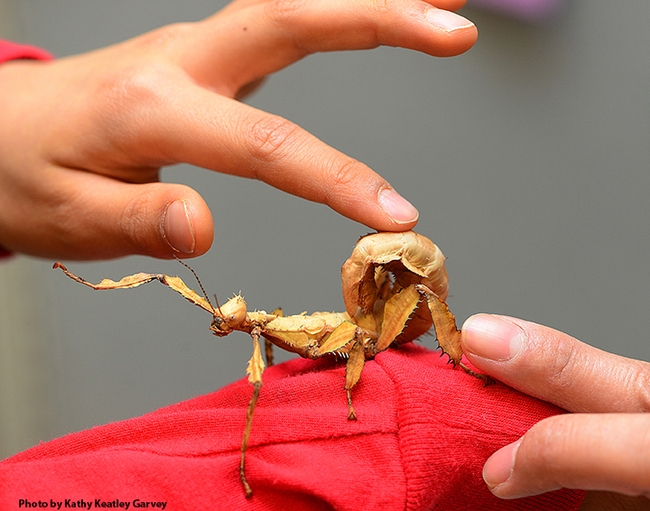

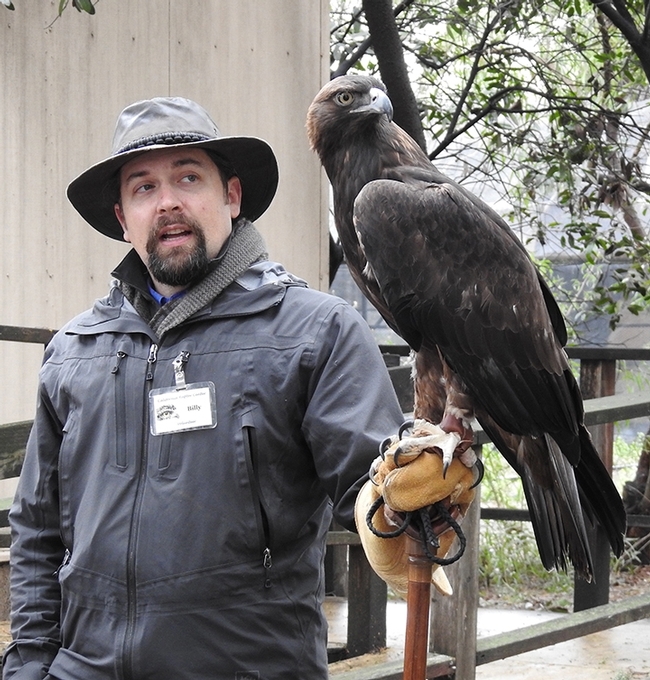
- Author: Kathy Keatley Garvey
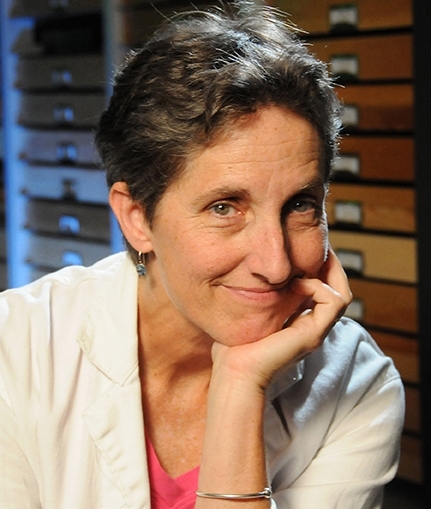
If you love numerical palindromes, Kimsey's birthday last year fell on 2-1-21, and Bohart associate Greg Kareofelas' birthday this year fell on 2-2-22. (Note February's next numerical paiindrome is 2-22-22.)
This year the Bohart Museum, home of a worldwide collection of eight million insect specimens, is celebrating its 75th year. Let's just say that Kimsey is younger than that.
So, a quick update with Professor Kimsey:
Q. "What fascinates you about insects?"
A. "All the incredibly weird things they do. Every year I learn something head-slappingly new!"
Q. "What do you want the public to know the most about insects?"
A. "That insects are mostly harmless and really important parts of our lives as well as other animals and plants."
Q. "What's your next project?"
A. "Right now I'm working on two book projects: the Mosquitoes of California and Keys to the Insects of California."
Q. "What insect has the longest life span?"
A. "Depends on how you define it. Desert insects can stay in diapause for up to 10 years or more. Jerry Powell at UC Berkeley discovered that the yucca moth can remain in the pupa for several decades before emerging when it rains. As for adult insects, probably stink beetles live the longest here."
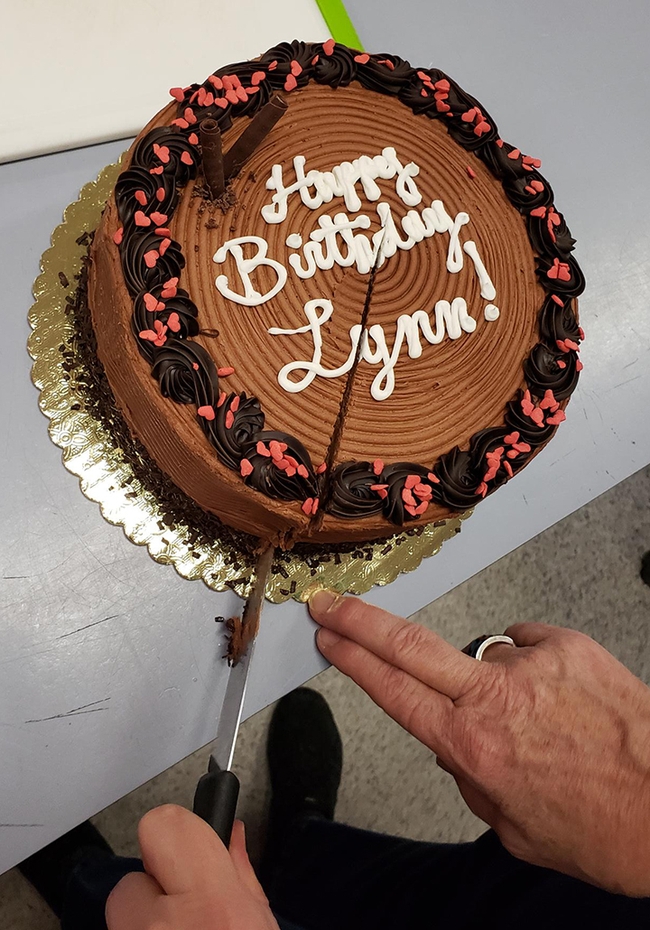
Professor Kimsey is an alumnus of UC Davis. She received her undergraduate degree in 1975 and her doctorate in 1979. Richard M. Bohart, for whom the insect museum is named, served as her major professor and she was his last graduate student.
Kimsey joined the UC Davis entomology faculty in 1989. Her areas of expertise include insect biodiversity, systematics and biogeography of parasitic wasps, urban entomology, civil forensic entomology, and arthropod-related industrial hygiene. She is a recognized global authority on the systematics, biogeography and biology of the wasp families, Tiphiidae and Chrysididae.
Kimsey has served in numerous leadership roles at the international, national and local level, including two terms as president of the International Hymenopterists, board member of the Natural Science Collections Alliance, and interim chair and vice chair (twice) of the UC Davis Department of Entomology (now the Department of Entomology and Nematology).
In 2020, the Pacific Branch, Entomological Society of America (PBESA), presented her with its highest honor, the C. W. Woodworth Award. She earlier received two other PBESA awards: the Systematics, Evolution and Biodiversity Award in 2014, and shared the Team Award in 2013 with colleagues Eric Mussen, Robbin Thorp, Neal Williams and Brian Johnson, who were recognized for their collaborative work specializing in honey bees, wild bees and pollination issues through research, education and outreach.
Known for her decades of public service, Kimsey received the UC Davis Academic Senate Distinguished Scholarly Public Service Award in 2016.
The Bohart Museum is located in Room 1124 of the Academic Surge Building on Crocker Lane, UC Davis campus. In addition to its eight million insect specimens, it houses a live "petting zoo" (think Madagascar hissing cockroaches, stick insects and tarantulas) and a gift shop (now online), stocked with insect-themed gifts such as books, posters, jewelry, t-shirts and hoodies.
Questions? Will the 75th anniversary celebration of the Bohart Museum continue this year? When will the Bohart Museum be open to the public and when will it begin hosting its ever-popular open houses? To be determined, but spoiler alert: One event will involve the California dogface butterfly, Zerene eurydice, the state insect. This is the 50th anniversary of when the State Legislature named the butterfly the state insect. Stay tuned.
